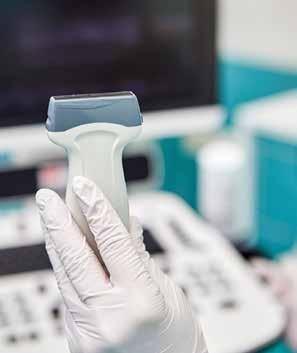COMMITTEE REPORT OPERATIONS MANAGEMENT
The Role of Ridesharing in Emergency Medicine Jennifer Rosenbaum, MD; Nicole V. Lucas, MD; and Kraftin E. Schreyer, MD CMQ FAAEM
HEALTH CARE PROVIDERS ARE INCREASINGLY AWARE THAT PATIENTS’ SOCIAL DETERMINANTS GREATLY AFFECT THEIR CLINICAL OUTCOMES. ONE OF THESE FACTORS IS ACCESS TO TRANSPORTATION, AND RIDESHARING MIGHT BE PART OF THE SOLUTION.” The advent and broad availability of ridesharing services, such as Lyft and Uber, are changing the way patients access medical services, and emergency departments (EDs) are taking notice. Health care providers are increasingly aware that patients’ social determinants greatly affect their clinical outcomes. One of these factors is access to transportation, and ridesharing might be part of the solution. A 2013 review, published in the Journal of Community Health, reported that one in four lower-income patients missed or rescheduled medical appointments due to a lack of transportation.1 Without appropriate outpatient care, those patients with worsening chronic medical conditions or new acute problems can lead to ED visits and hospitalizations. In fact, persons with unmet transportation needs are two times more likely to have multiple ED visits and inpatient visits.2 Ridesharing services may help with prehospital transportation by reducing unneeded transports by emergency medical services (EMS). Ambulances and EMS are a valuable community resource that are traditionally intended for the treatment and transport of critical patients. Yet, some articles estimate that 10% of EMS transports are “low acuity,” involving minor ailments like musculoskeletal injuries or mild upper respiratory infections.3 That percentage can translate to millions of unneeded rides, given that in 2018, for example, there were
26
COMMON SENSE JANUARY/FEBRUARY 2021
over 30 million EMS transports in the U.S.4 Interestingly, when surveyed, up to 60% of patients suggested they were willing to be transported by non-emergency vehicles to the ED if offered.5 The cost of transport is also an issue. Seventy one percent of all ambulance rides involve surprise bills to the patient and on average, ambulance rides cost patients $450.6 These numbers suggest that ridesharing services may be able to play a broader role in prehospital EMS transport availability and provide cost savings to both patients and the health care system. Patients without transportation to their discharge destination also contribute to ED crowding. Many patients are unable to find family or friends to pick them up, unable to use public transportation, or they may have received medications that make them unable to drive home independently. Although many patients are aware of ridesharing services, when surveyed, only 5% of patients planned to use these services post-discharge from the ED.7 Psychiatric patients, in particular, are known to have lengthy disposition times while awaiting placement and transportation to a specialized psychiatric facility. Many barriers contribute to this long length of stay including type of insurance, insurance status, day of presentation to
the ED, and medical transportation. In spite of these obstacles, EDs that use ridesharing services to transport voluntary psychiatric patients have shown shorter times to discharge.8 While some hospitals offer ride vouchers to defray costs of delayed discharge, health care organizations are now developing more consistent approaches to this issue. Ridesharing providers have rolled out new services to better integrate with medical care and health insurers. Uber recently partnered with Cerner, and Lyft recently paired with Epic, two of the largest electronic medical record (EMR) providers, to make it easier for hospitals to order rides for patients. These companies are increasingly finding that insurance payers, particularly Medicaid plans, are willing to cover the cost of their members’ rides. Not only could these services decrease missed appointments, but they could also be used in busy EDs to help patients get to their discharge destination in a more timely manner. The integration with EMRs also
ONLY COULD THESE SERVICES DECREASE MISSED APPOINTMENTS, BUT THEYNOTCOULD ALSO BE USED IN BUSY EDS TO HELP PATIENTS GET TO THEIR DISCHARGE DESTINATION IN A MORE TIMELY MANNER.”
>>























